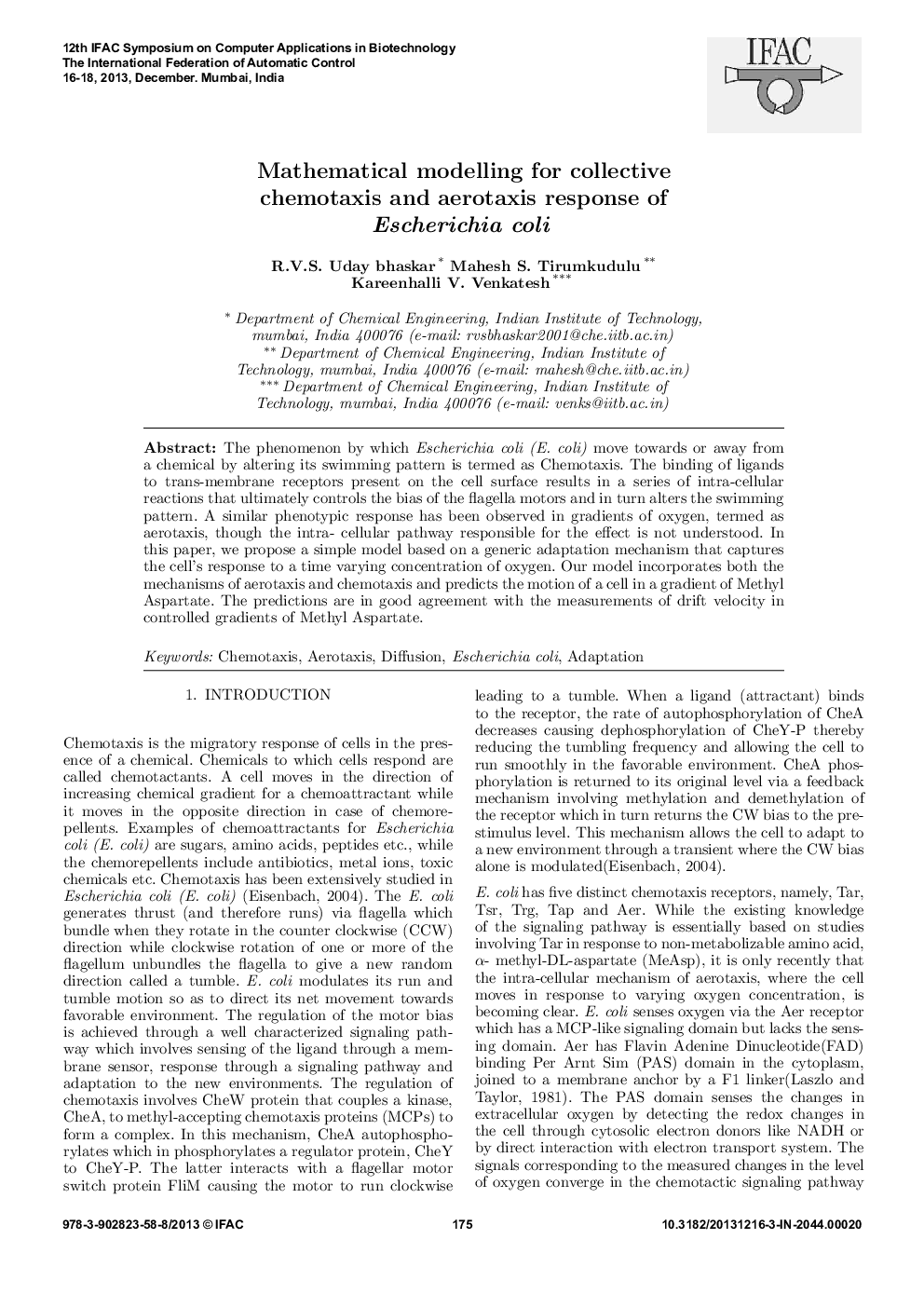| Article ID | Journal | Published Year | Pages | File Type |
|---|---|---|---|---|
| 713968 | IFAC Proceedings Volumes | 2013 | 6 Pages |
The phenomenon by which Escherichia coli (E. coli) move towards or away from a chemical by altering its swimming pattern is termed as Chemotaxis. The binding of ligands to trans-membrane receptors present on the cell surface results in a series of intra-cellular reactions that ultimately controls the bias of the flagella motors and in turn alters the swimming pattern. A similar phenotypic response has been observed in gradients of oxygen, termed as aerotaxis, though the intra- cellular pathway responsible for the effect is not understood. In this paper, we propose a simple model based on a generic adaptation mechanism that captures the cell's response to a time varying concentration of oxygen. Our model incorporates both the mechanisms of aerotaxis and chemotaxis and predicts the motion of a cell in a gradient of Methyl Aspartate. The predictions are in good agreement with the measurements of drift velocity in controlled gradients of Methyl Aspartate.
